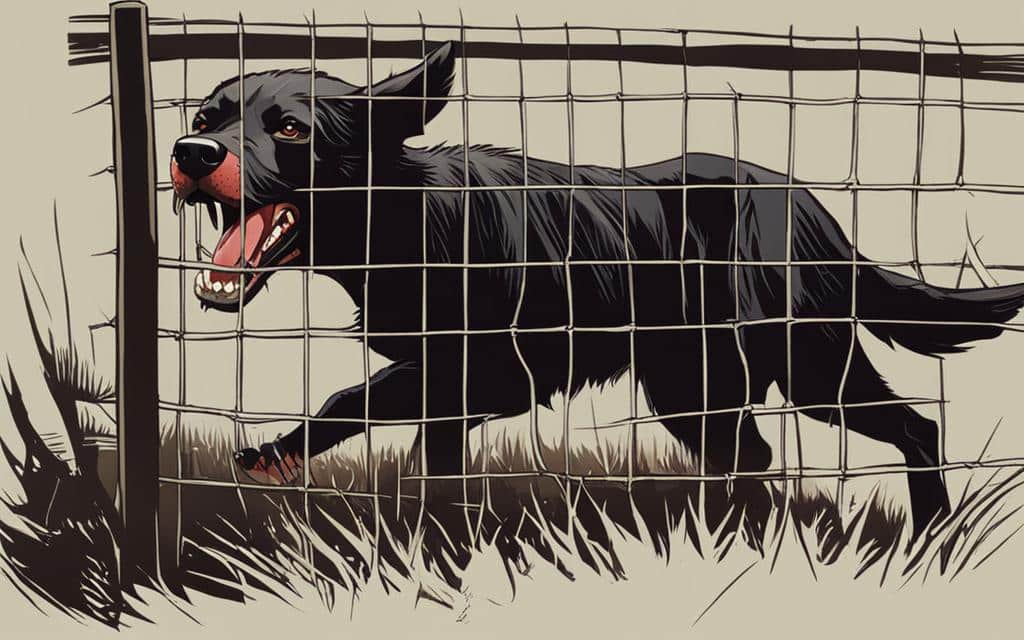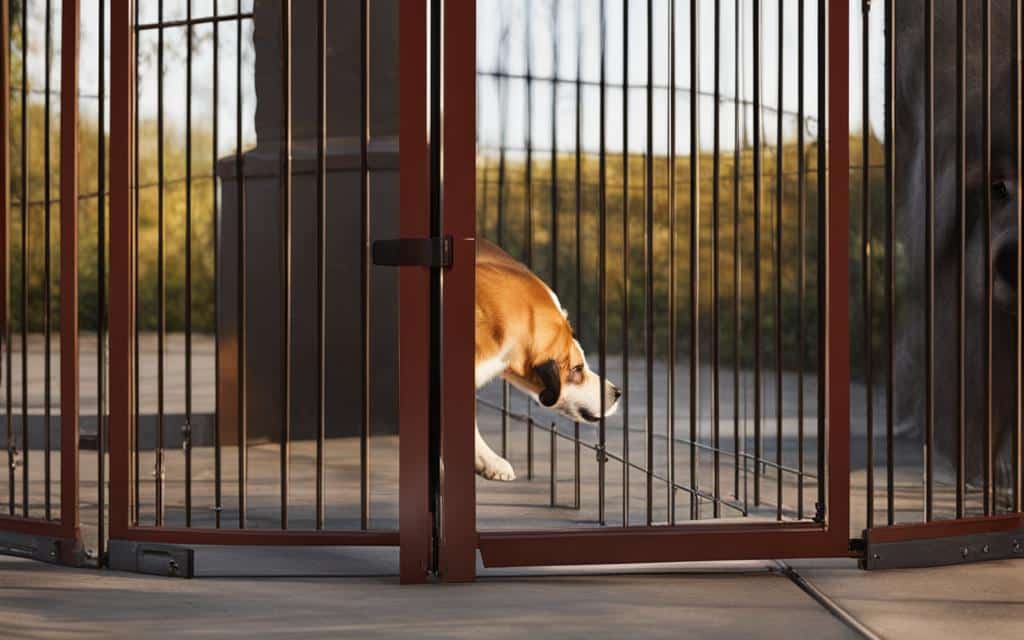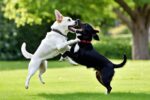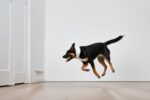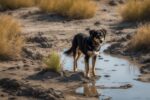Understanding and Managing Aggression in Dogs
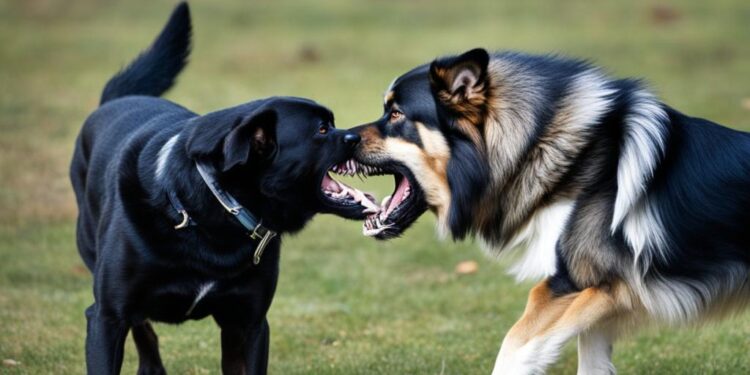
Aggression is a common and serious behavior problem in dogs that can have a significant impact on both their well-being and the human-animal bond. To ensure a harmonious relationship with our canine companions, it is crucial to have a deep understanding of the factors that contribute to aggression and employ effective management techniques.
In this article, we will delve into the intricate world of aggression in dogs, exploring its causes and providing valuable insights into the prevention and treatment of this challenging behavior. Whether you are a dog owner, trainer, or simply interested in canine behavior, this information will equip you with the knowledge and training techniques necessary to address aggression and promote a safe and amicable environment for all.
Throughout this series, we will examine how to develop behavior treatment plans, identify triggers, and modify the environment to prevent further instances of aggression. With a comprehensive understanding of aggression in dogs, together, we can work towards building a strong foundation of trust and positive behavior for our furry friends.
The First Step in a Behavior Treatment Plan for Aggressive Behavior
Aggression in dogs can be a concerning behavior that poses risks to both the dog and those around them. To effectively address aggression, a comprehensive behavior treatment plan is necessary. The first step in this plan is to focus on prevention, both by modifying the dog’s behavior and the environment it is exposed to.
Immediate changes can be made to the environment to avoid situations that trigger aggressive behavior. By creating a list of situations where the dog has shown aggression, owners can identify potential triggers and take steps to prevent exposure to them. This can involve keeping the dog away from certain environments, people, or other animals that have previously led to aggression.
As the treatment progresses, safety guidelines will be adjusted according to the dog’s progress. In addition to modifying the environment, the behavior treatment plan will incorporate strategies to teach the dog new responses and tolerance towards the triggers that have caused aggression in the past.
In order to effectively prevent aggression, it is crucial to work with a professional dog behaviorist or trainer who can develop a customized treatment plan tailored to the specific needs of the dog. Patience, consistency, and positive reinforcement techniques are key components of a successful behavior treatment plan for aggressive dogs.
“The first step in treating aggression in dogs is to prevent further episodes by modifying both the behavior and the environment.”
The Importance of Prevention
Prevention plays a critical role in managing aggressive behavior in dogs. By identifying and avoiding triggers, owners can significantly reduce instances of aggression and create a safer environment for everyone involved. Effective prevention strategies not only reduce harm but also set the groundwork for successful behavior modification.
- Identify specific triggers: By carefully observing the dog’s behavior, owners can pinpoint the specific triggers that lead to aggression.
- Avoid triggering situations: Once the triggers are identified, it is essential to avoid exposing the dog to those situations until behavior modification progresses.
- Consult a professional: Working with a professional dog behaviorist or trainer is crucial in developing a behavior treatment plan that includes preventative measures.
By taking proactive steps to prevent aggression, owners can lay the foundation for a successful behavior treatment plan that effectively addresses aggressive behavior in dogs.
Why Does Aggression Worsen with Each Event?
Aggression can worsen with each event due to a combination of reinforcement and inconsistent responses. When a stimulus retreats after the dog displays aggression, it reinforces the behavior, providing relief for the dog. This reinforcement strengthens the aggressive response, making it more likely to occur in the future.
Inconsistent responses from the targeted recipient can also contribute to the escalation of aggression. If the dog receives mixed signals or unclear boundaries, it can become frustrated and intensify its aggressive behavior as a result.
Additionally, the way a person responds to the dog’s aggression can influence its intensity. Fearful responses from people can make dogs anxious and increase the likelihood of aggressive behavior. Dogs are highly perceptive to human emotions and may mirror the fear or anxiety they sense, leading to heightened aggression.
“Aggression can worsen with each event due to a combination of reinforcement and inconsistent responses. When a stimulus retreats after the dog displays aggression, it reinforces the behavior, providing relief for the dog.”
How Long Should Exposure to Trigger Situations be Prevented?
The duration of preventing exposure to trigger situations can vary depending on the dog’s personality, the comfort level of the owner, and the type of aggression. It is important to assess the risk and prognosis for each dog and develop a behavior treatment plan that includes desensitization and counterconditioning exercises for specific triggers. Some trigger situations may need to be permanently avoided or managed to ensure the safety of everyone in the household.
Exposure to trigger situations should be carefully managed to prevent further escalation of aggression. This requires a systematic approach to behavior modification and gradual exposure to the triggers under controlled conditions.
Assessing the Dog’s Personality and Comfort Level
Each dog is unique, and their response to trigger situations may vary. Some dogs may be more sensitive or reactive than others, while some may have a higher threshold for aggression. It is crucial to understand the individual dog’s personality and comfort level when determining the duration of preventing exposure.
Quote: “By understanding your dog’s personality and comfort level, you can tailor a behavior treatment plan that suits their needs and promotes positive change.” – Dr. Emily Brown, Canine Behavior Specialist
The dog’s comfort level can be assessed through observation and consultation with a professional dog trainer or behaviorist. They can help identify the specific triggers and gauge the dog’s response to different situations.
Behavior Modification and Gradual Exposure
Behavior modification techniques, such as desensitization and counterconditioning, should be incorporated into the treatment plan. These techniques involve gradually exposing the dog to the trigger situations while simultaneously providing positive reinforcement to change their emotional response.
Desensitization involves exposing the dog to the trigger at a lower intensity or from a safe distance to reduce their anxiety or fear. Counterconditioning aims to change the dog’s emotional response to the trigger by associating it with positive experiences, such as treats or praise.
Quote: “Behavior modification techniques can help reshape the dog’s response to trigger situations, promoting a calmer and more controlled demeanor.” – Jane Walker, Professional Dog Trainer
It is important to progress at a pace that is comfortable for the dog, gradually increasing the difficulty of the exposure as they exhibit positive responses. This gradual approach helps build their confidence and reduces the risk of triggering aggressive behavior.
Permanent Avoidance or Managed Exposure
In some cases, certain trigger situations may pose significant risks or be difficult to address through behavior modification techniques alone. In these instances, permanent avoidance or managed exposure may be necessary.
Permanent avoidance involves identifying and eliminating trigger situations from the dog’s environment entirely. This may include avoiding certain places, restricting access to certain individuals or animals, or modifying daily routines to minimize potential triggers.
Managed exposure, on the other hand, involves implementing safety measures and strict control over the dog’s interactions with trigger situations. This may include using leashes, muzzles, or other management tools to ensure the safety of everyone involved while working on behavior modification in a controlled setting.
Each dog’s situation is unique, and the decision to permanently avoid or manage trigger situations should be based on a careful assessment of the risks and the potential for behavior modification success.
Ensuring Safety When Triggers Cannot Be Controlled
In instances where triggers for aggression cannot be controlled, there are management tools that can improve safety. It is crucial to prioritize the safety of both the dog and the people in its environment. By implementing the following measures, you can minimize the risk and potential harm associated with aggression:
- Use a leash or tether: Restraining the dog at a safe distance from the stimulus can prevent direct contact and reduce the likelihood of an aggressive response.
- Utilize crates or confinement: Separating the dog from potential triggers in a secure crate or confinement area can create a safe space and minimize the chances of aggression.
- Employ a basket muzzle: A basket muzzle can be an effective tool to prevent the possibility of a bite, providing an added layer of safety during situations where the triggers cannot be avoided.
- Utilize a head halter: Redirecting the dog’s focus away from triggers using a head halter can help maintain control and manage their response, promoting safety in challenging situations.
It is crucial to use these management tools with caution and under proper supervision. Safety should always remain a top priority. By employing these strategies, dog owners can create a safer environment while working towards behavior modification and addressing underlying causes of aggression.
Safety Measures for Aggression Towards People or Animals Outdoors
To ensure outdoor safety when a dog displays aggression towards people or animals, it is important to take appropriate measures. Avoiding walks in locations or times with potential triggers can significantly reduce the risk of incidents. If encounters with individuals or animals happen during walks, the dog should be leashed and kept at a safe distance to allow for quick calming after the stimulus has passed.
“Preventing potential triggers during outdoor activities is crucial to ensure the safety of both the dog and those around.”
Using a leash restraint provides control and allows the owner to guide the dog away from potentially stressful situations. Keeping a safe distance helps minimize the chances of aggressive behavior escalating. It also gives the owner an opportunity to redirect the dog’s focus and encourage more positive behavior.
Additionally, utilizing a basket muzzle can provide added safety by preventing the possibility of a bite. Muzzles should always be used responsibly and in a proper training context, with the dog’s comfort and well-being in mind.
Here’s an example of how a basket muzzle can ensure safety in outdoor situations:
| Situation | Action |
|---|---|
| Encounter with another dog | Leash the dog at a safe distance, allowing them to observe without direct interaction. If necessary, put on a basket muzzle to prevent potential aggression. |
| Encounter with a person | Leash the dog and maintain a safe distance. Ensure the dog is under control and consider using a basket muzzle if needed. |
| Unpredictable situations | Always prioritize safety. Use a leash and, if necessary, a basket muzzle to minimize potential risks and keep everyone safe. |
Remember, it’s crucial to consult with a professional dog trainer or behaviorist to ensure the use of appropriate safety measures and to develop a comprehensive training plan tailored to your dog’s specific needs.
Ensuring Safety with Aggression Towards Visitors
When a dog exhibits aggression towards visitors, ensuring their safety becomes a top priority. It’s crucial to follow proper protocols to prevent any potential harm. Here are some guidelines to help you manage aggression towards visitors:
- Confine the dog: Safely confine the dog in a separate room or area until the visitors have settled. This will prevent any direct contact between the dog and the visitors, reducing the risk of an aggressive incident.
- Leash restraint: If the dog can settle on a leash in the presence of the visitors, it should be securely held by an adult family member. This provides an extra layer of control and prevents the dog from approaching or lunging at the visitors.
- Utilize a basket muzzle: In cases where the dog’s comfort zone may be breached unexpectedly or if there is a history of aggressive behavior, using a basket muzzle can provide added safety. A basket muzzle allows the dog to breathe and drink without compromising visitor safety.
It’s important to note that visitors should not attempt to approach or pet a muzzled dog, as this can trigger an aggressive response. Always prioritize the safety of both the visitors and the dog when dealing with aggression.
| Pros | Cons |
|---|---|
| Muzzles prevent potential bites and protect visitors from harm. | Some dogs may feel uncomfortable or anxious when wearing a muzzle, which could cause additional stress. |
| Leash restraint provides control and prevents the dog from making direct contact with visitors. | Leashing may increase stress levels in some dogs, potentially exacerbating their aggression. |
| Confining the dog to a separate area ensures visitor safety and minimizes the risk of an aggressive incident. | Separating the dog may cause feelings of isolation, leading to further anxiety and potential behavioral issues. |
Conclusion
Aggression in dogs is a complex issue that requires a multifaceted approach. Understanding the underlying causes and motivations is crucial in managing aggressive behavior effectively. By implementing prevention strategies, behavior modification techniques, and environmental management, dog owners can address and control aggression in their pets.
Prevention plays a vital role in managing aggression. Identifying trigger situations and avoiding them can help minimize the occurrence of aggressive behavior. Additionally, understanding the principles of behavior modification and incorporating positive reinforcement can encourage desired responses and reduce aggression.
Environmental management is another key aspect of aggression management. Creating a safe and structured environment for the dog can help minimize stress and potential triggers. Utilizing tools like leashes, tethers, muzzles, and crates can provide added safety and control when dealing with aggression.
By integrating these management strategies into daily routines and working closely with professional trainers or behaviorists, dog owners can create a harmonious bond with their pets and promote a safe environment for everyone involved. With patience, consistency, and a proactive approach, aggression in dogs can be effectively managed, allowing for a happier and healthier relationship between humans and their furry companions.
FAQ
What is the first step in treating aggression in dogs?
The first step is to prevent further episodes by modifying both the behavior and the environment. Immediate changes can be made to the environment to avoid situations that trigger aggression.
Why does aggression worsen with each event?
Aggression worsens with each event because it is reinforced when the stimulus retreats, leading to relief for the dog. Inconsistent responses from the targeted recipient can also contribute to the escalation of aggression.
How long should exposure to trigger situations be prevented?
The duration of preventing exposure to trigger situations can vary depending on the dog’s personality, the comfort level of the owner, and the type of aggression. It is important to assess the risk and prognosis for each dog and develop a behavior treatment plan that includes desensitization and counterconditioning exercises for specific triggers.
What safety measures can be taken when triggers cannot be controlled?
In instances where triggers for aggression cannot be controlled, there are management tools that can improve safety. These tools include using a leash or tether to restrain the dog at a safe distance from the stimulus, utilizing crates or confinement to separate the dog from potential triggers, using a basket muzzle to prevent the possibility of a bite, and using a head halter to redirect the dog’s focus away from triggers.
How can safety be ensured with aggression towards people or animals outdoors?
To ensure safety when a dog may display aggression towards people or animals outdoors, it is recommended to avoid walks unless in a location or time without potential triggers. If encounters with other individuals or animals occur on walks, the dog should be leashed and kept at a safe distance to allow for quick calming after the stimulus has passed. Using a basket muzzle can also provide added safety by preventing the possibility of a bite.
How can safety be ensured with aggression towards visitors?
When a dog exhibits aggression towards visitors, it is important to safely confine the dog until the visitors have settled. If the dog can settle on a leash in the presence of the visitors, it should be securely held by an adult family member. Utilizing a basket muzzle can provide added safety in case the dog’s comfort zone is breached unexpectedly. Visitors should not attempt to approach or pet a muzzled dog to avoid triggering an aggressive response.
